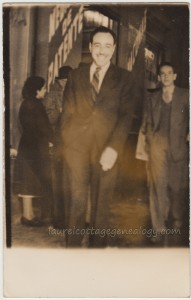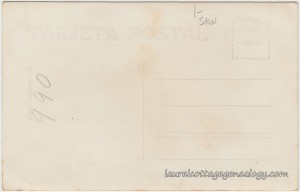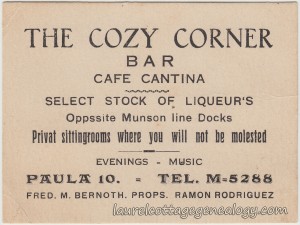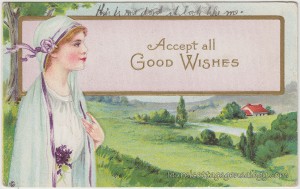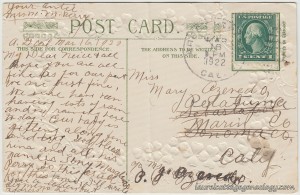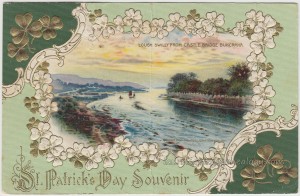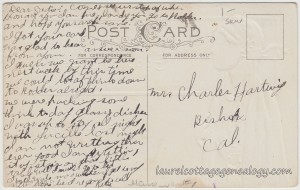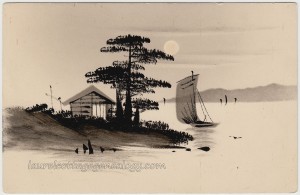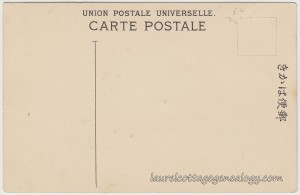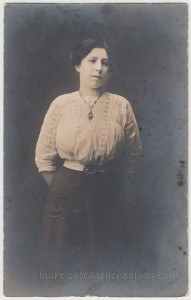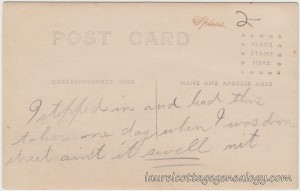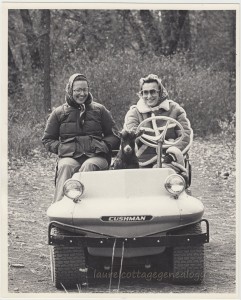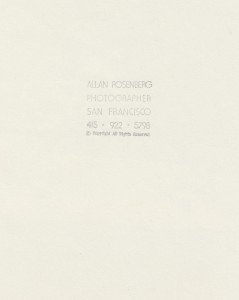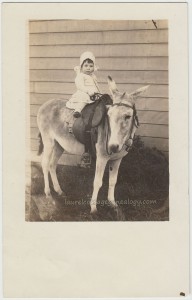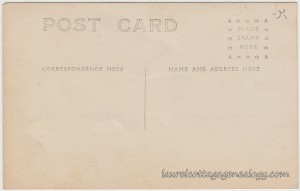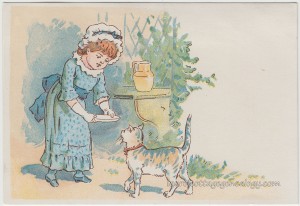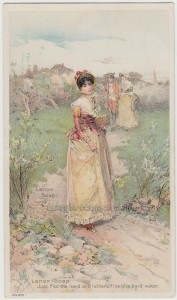
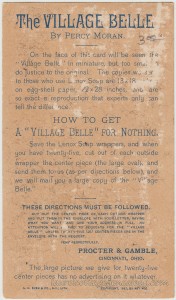
Trade card, circa 1887. Lithograph by G.H. Buek & Co., New York. Based on an original watercolor by Edward Percy Moran.
Price: $20.00 Size: About 3 and 1/4 x 5 and 1/2″
How nice that the copyright date is given on this stunning trade card. It shows 1887 by Art Age, and is a lithograph produced by G. H. Buek & Co., New York. This makes this piece of ephemera, as of the time of this post, about 128 years old. The back shows the company Procter & Gamble promoting it’s product Lenox Soap with the description, “Just Fits the hand and lathers freely in hard water.” (There’s that incongruous use of a capital letter that we see so often!)
Edward Percy Moran (1862 – 1935)
Edward Percy Moran was a prominent American artist who is well-known especially for his scenes of Colonial America. Born in Philadelphia into an artistic family, his father Edward Moran was a notable English-born artist who had emigrated to the United States; his brother Leon, two uncles, Peter and Thomas, and a cousin, Jean Leon Gerome Ferris were also noted for their artistic talents. Edward Percy Moran studied under his father, and also at the Pennsylvania Academy of Fine Arts, the National Academy of Design, and in London and Paris. He died in New York City in 1935, and his works are maintained in at least several collections in museums around the country.
25 center pieces…
To get a large print without advertising back in the day, you had to cut out twenty-five center pieces of the outside wrappers and send them in to Procter & Gamble. I like the advertiser’s sense of humor here in the header “How to get a ‘Village Belle’ for nothing.”
And it is important to note that G.H. Buek & Co. and/or P&G were stressing that the trade card was unable to do justice to the larger print that was being offered. (The biggest difference we note is that the lack of detail in The Belle’s face on the trade card gives her a different expression – but charming nonetheless.)
A Facsimile…
The original “Village Belle” was done in watercolor; prints of the original can still be found at auction from time to time. An excerpt from The American, Vol. XV, published in 1888, on the subject of the reproduction process and citing “The Village Belle” as an example, is as follows:
“It is a pity that ‘chromo’ has come to have so ignoble a meaning; for the art of chromo-lithography is capable of so excellent a use and so fine results that it deserves to be held in respect. When we divest ourselves of prejudice, we perceive the merits of many colored ‘prints’ in the shop windows, and any candid artist will admit to us that the lithograph worker has been able to produce in them results which can scarcely be distinguished, – and for all practical purposes of eye delight, do not need to be distinguished, – from the original work of the artist himself. An example of this is the reproduction, by the Art Age, of New York, of a water color by Percy Moran, ‘The Village Belle.’ In this every tint and effect of the original is brought out, the colors are as fresh and delicately expressed as they were by the artist’s brush. It is, in fact, a fac-simile, and required no less than eighteen distinct printings, the number of colors and combinations of coloring thus produced being between twenty and thirty. It is a charming picture, and there is no reason, except the fact that you can buy it for a dollar, why it should not go on your walls with the others of like rank in the scale of the beautiful.”
The Belle helps to sell Want Ads….
As promised (I’d forgotten till the comments from Elle reminded me – thanks, Elle!) here is the newspaper article that appeared in the San Francisco Chronicle, May 2, 1896. Expression-wise, it doesn’t do The Belle justice, but still, one would think it turned out pretty good, picking up so much detail. What would have been involved in printing something like this back then?
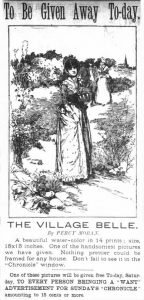
Sources: Edward Percy Moran. n.d. http://en.wikipedia.org/wiki/Edward_Percy_Moran. (accessed March 15, 2015).
Thompson, Robert Ellis (Ed.) (1888) The American. Journal of Literature, Science, the Arts, and Public Affairs., Vol. XV. p. 43. Web accessed March 15, 2015.
Edward Percy Moran (1862 – 1935). White Mountain Art. Web accessed March 15, 2015.
“To Be Given Away To-day.” San Francisco Chronicle, May 2, 1896, Saturday, p. 12. (Newspapers.com).

